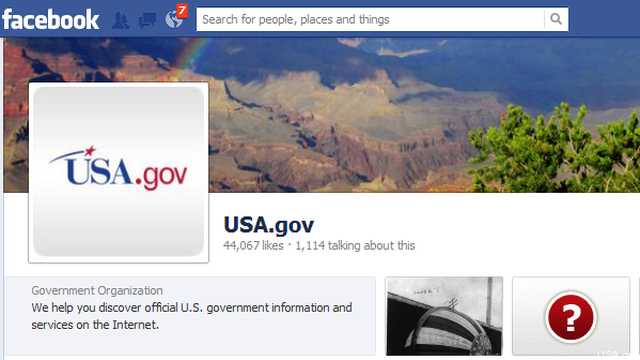 The heads of state in three-fourths of the nations surveyed around the globe now use Twitter to communicate with followers, nearly twice the number from a year ago, according to a new report from the Digital Policy Council (DPC).
The heads of state in three-fourths of the nations surveyed around the globe now use Twitter to communicate with followers, nearly twice the number from a year ago, according to a new report from the Digital Policy Council (DPC).
The report evaluated 164 countries (fewer than the 193 recognized by the United Nations) and found that the heads of state in 123 of those countries, or 75%, maintain a Twitter account.
That figure compares to 69 countries in an August 2011 survey, and represents a 93% compound annual growth rate since DPC started tracking the data in 2010.
“For a leader who a short time ago threatened to shut down social media services in London in the wake of rioting, Prime Minister Cameron’s reversal — ‘You’ve got to get with the programme’ — is quite telling,” the report said. Cameron now ranks 23rd on the latest list.
“The sheer popularity that social platforms like Twitter possess make it clear that traditional media channels are no longer adequate or in some cases, even effective. Leaders seek to be where their people are, and are recognizing, more than ever, that the options for communicating with their electorate have been redefined.”
Following are the top 10 heads of states using Twitter, according to the report, based on the number of followers each has attracted:
| 2012 Rank | 2011 Rank | Official (Twitter link) | Country | Followers (Million) |
|---|---|---|---|---|
| 1 | 1 |
President Barack Obama |
United States | 24.611 |
| 2 | 2 |
President Hugo Chavez |
Venezuela | 3.802 |
| 3 | 11 |
President Abdullah Gul |
Turkey | 2.576 |
| 4 | 4 |
Queen Rania Al Abdullah |
Jordon | 2.459 |
| 5 | 8 |
President Dmitry Medvedev |
Russia | 2.070 |
| 6 | 6 |
President Dilma Rousseff |
Brazil | 1.752 |
| 7 | 9 | President Cristina Fernandez de Kirchner | Argentina | 1.461 |
| 8 | 14 |
President Juan Manuel Santos |
Columbia | 1.455 |
| 9 | 5 |
President Enrique Pena Nieto |
Mexico | 1.362 |
| 10 | 12 | Prime Minister & Ruler of Dubai His Highness Sheikh Mohanned bin Rashid Al Maktourn | United Arab Emirates | 1.343 |
Not surprisingly, U.S. President Barack Obama, whose Twitter account dates back to March 5, 2007, has amassed the widest following worldwide of any head of state.
Other early adopters, however, including Canadian Prime Minister Stephen Harper, who began tweeting July 11, 2007, have found only a fraction of the following (Harper had 276,060 followers in the latest ranking.)
Most of the world leaders in the rankings have generally only recently joined the social media revolution in earnest, according to data cataloged in the report, which includes information on the political stability and social media “klout” scores of world leaders.
“As digital activism becomes more intensified, it is often seen as a threat to governments, but an outcome has been the steady increase in the number of heads of state that are using Twitter, and recognizing the benefits of the vehicle to allow for direct interaction with constituents,” the report noted.
 The White House announced it plans to introduce the inaugural members of its
The White House announced it plans to introduce the inaugural members of its 



 UPDATED. President Barack Obama reached out across the Internet to engage directly with Americans and small business owners in a live virtual interview staged by The White House Monday. The virtual session, held at 5:30 EST, was hosted by Google and produced using YouTube in what was billed as a post State of the Union Google+ Hangout.
UPDATED. President Barack Obama reached out across the Internet to engage directly with Americans and small business owners in a live virtual interview staged by The White House Monday. The virtual session, held at 5:30 EST, was hosted by Google and produced using YouTube in what was billed as a post State of the Union Google+ Hangout. Few events are more thoroughly parsed for what is said and not said than the President’s annual
Few events are more thoroughly parsed for what is said and not said than the President’s annual  Social media is approaching main stream adoption in the federal government, with 41% of federal workforce respondents polled in
Social media is approaching main stream adoption in the federal government, with 41% of federal workforce respondents polled in  President Barack Obama took to the new media stage at LinkedIn in Silicon Valley this afternoon (Sept. 26) to speak to a studio and online audience about his $450 billion jobs proposal, signaling yet again the president’s knack for harnessing social media to take his message directly to the America public.
President Barack Obama took to the new media stage at LinkedIn in Silicon Valley this afternoon (Sept. 26) to speak to a studio and online audience about his $450 billion jobs proposal, signaling yet again the president’s knack for harnessing social media to take his message directly to the America public.